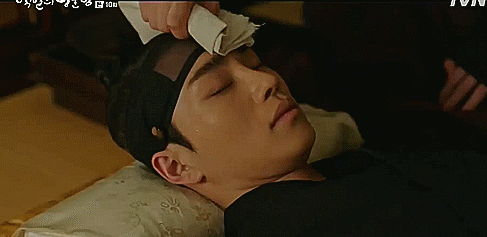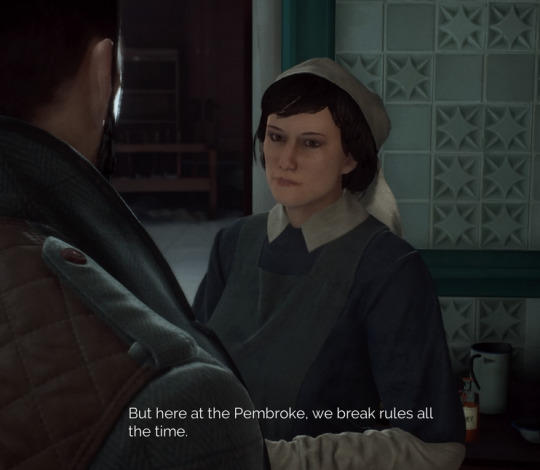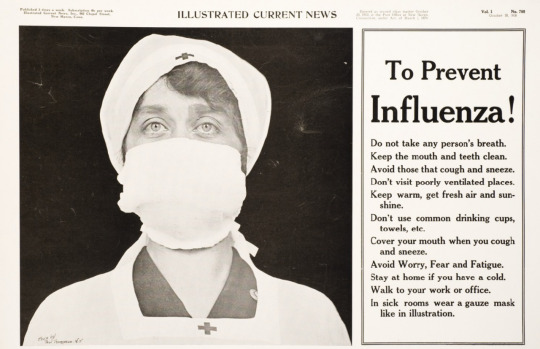#historical medicine
Photo






100 Days My Prince - Ep. 9, 10 + 11
#100 days my prince#kdrama#aftermath#recovery#unconscious#concern#bedside vigil#infection#feverish#medieval#historical medicine#rescue#carried#piggyback carry#bromance#protective friend#kim jae young#hong yun jae#whump#kwhump#asian whump
72 notes
·
View notes
Text
There's been an uptick of interest in my medical history posts, so have a Medical History Masterpost:
Skillfully Combined™ (the notorious Victorian cough syrup photo and the pharmacology behind it)
The Industrial Revolution & the Pharmacological Boom (ft. expansionism, chemistry and geopolitics)
The Edwin Papyrus & Imhotep (ft. input and correction from an Egyptologist!)
Cancer as a Chronic Disease through History
Imhotep's gout treatment and modern pharmacology
Absolute Madlad Ambrose Paré, Ligature and Haemostatic Clamps
NB: I'm a biomedical science undergrad who's been reading literature about medical history since age 7, not a doctor or a historian. Whilst I add academically weighted sources where necessary, I strongly encourage you to do your own further reading, and not to take my word as Gospel. Finally, none of this is medical advice, nor am I qualified to give medical advice. If you're worried, see your GP.
#em.txt#adventures in biomed#medblr#history#the history of medicine#medical history#historical medicine#pharmacology
51 notes
·
View notes
Text


my favourite superhero, wound man
#digital art#artists on tumblr#procreate art#medieval art#historical art#medieval#historical medicine#he thrusts his fists against the posts#wound man
6 notes
·
View notes
Note
What would be the standard treatment of large burns (covering 30% of the body, mostly limb) in the late 1800s/early 1900s?
If the skin is intact and without blisters, they would have covered with a thick layer of either dry baking soda or flour, put cotton wool over it, and wrapped loosely with a bandage.
If there were blisters, they would have considered that an open wound, and thoroughly cleaned anything that would touch it. They would have drained the the blisters with sterilized scisors, cleansed with salted boiled water, and covered with an antiseptic. At the time, this antiseptic would have been carbolized vaseline, carbolized olive oil, or olive oil mixed with lime water.
"Carbolized" means mixed with carbolic acid. Olive oil or vaseline would have been used at the time to keep in fluids, since large burns can cause severe dehydration. Lime water would have been water mixed with calcium hydroxide or calcium oxide (powdered limestone in water).
Deeper burns would be covered with a temporary dressing and the patient treated for shock.
Treating for shock involved having the patient lay flat with the foot of the bed elevated (what we refer to as trandelenburg position). They would rub the person with hot alcohol (not directly on the burn), and put hot water bottles or bricks on the person's legs and over their heart. They would then have them drink spoonfuls of either coffee or whiskey. If they couldn't drink, they would give them an enema with either coffee (a half cup cooled to about 100F) or whiskey (two tablespoons in a cup of warm water).
Unfortunately I couldn't find good info for long-term care of a burned patient for the full-thickness burn. The above info came from Harrison's Home Nursing, published 1900.
67 notes
·
View notes
Text
One of the creepier historical myths, and one often used as an appeal to authority by creepy sex predator types, is the idea that premodern history was chock full of adult men boning little girls with the full acceptance and applause of secular and religious authorities.
Luckily, through the broad scope of human cultures and time periods, this just is not true. While it absolutely *happened*, same way it does now across the world (looking at you, US States where legislators calling trans people “groomers” for not wanting trans kids forced into suicide by gender dysphoria are doubling down on keeping ages of consent of *12* and *13*) it was vanishingly rare amongst the vast majority of the population from at least the early medieval period onwards (parts of the classical world were disturbingly big on adult men having sex with pubescent people read as boys and girls), and tended to result in enormous general opprobrium when it did happen.
Marriage before around age 16 minimum is almost entirely a noble phenomenon in the vast majority of history for alliance reasons, and even then cohabitation (ie regular sex - there was in theory ritual “bedding” on the wedding night but it was rarely expected to result in actual p-in-v for people below the age of 16ish) was a thing parents thought *hard* about the timing of because having regular sex with the likelihood of conception was thought to be bad for the health of *both* partners.
If you pick Henry VIII, for example, one of the figures your mind leaps right to when the terms “early modern” and “marriage” are mentioned in close proximity, the excuse that he finally settled on to try to divorce Catherine of Aragon in the end was her brief marriage to his elder brother, Arthur, at that time the heir to the English throne until his early death of what was thought to be sweating sickness. It was accepted for decades of Catherine and Henry’s married life that that marriage was unconsummated without demur because they were both 15 at the time, and despite being ritually bedded (and Arthur making a few comments to his mates the next day about “being in the midst of Spain all night being thirsty work” which Henry’s lawyers made a *lot* of at his direction) they were actively kept away from each other at that point because Arthur’s health wasn’t great and his parents, Henry VII and Elizabeth of York, worried that regular sex at that age would basically drain his energy and unbalance his humours. There was a legal (and sometimes general) assumption in this period that putting a married couple in any kind of proximity where there was even a chance of privacyish meant boning and babies, so those couples married at that age sadly didn’t always get a great chance to get any kind of comfortable with each other even if they were living in the same household.
There is significant literature written in the medieval and early modern periods by clerics *and* medics about the dangers of sex and procreation for immature bodies. It is a topic that’s significantly raised by clerics writing about the need for female consent in marriage, mostly in the earlier medieval period when Christianity had an uneven hold on a lot of Europe, but up to the high medieval period when discussing parents marrying kids off too early for power consolidation; there were always parents who pushed for consummation too early because a marriage could be annulled if consummation couldn’t be proven, but that was rightly regarded as shitty behaviour - wilful endangerment of one’s children’s health or indeed their life for power.
#early modern history#medieval#early medieval#history#consent#historical marriage#the tudor dynasty#the tudors#age of consent#henry vii x elizabeth of york#henry viii#catherine of aragon#historical medicine#historiography
53 notes
·
View notes
Text
tumblr history squad i come to you in my time of need. does anyone have any good scholarly articles (or really, any scholarly articles at all) about the representation of historical medicine in popular culture? specifically looking for stuff about how it's universally portrayed as disgusting/violent/unethical
4 notes
·
View notes
Note
You mention Jon's pharmacy is very illegal, can you emphasise on that? Just as in like, he shouldn't be handing things out to anyone or? (Don't mind the asks I'm excited to have a vampyr lover active today)
SO. many thanks to @scoriasoil for bringing this to my attention, since historical medicine is more their wheelhouse than mine: as i understand it, the Pharmacy Act of 1868 sought to separate the fields of medical PRACTICE and mediCINE. if you weren't licensed with the Royal Pharmaceutical Society, you couldn't sell (or distribute) medicine that you had made yourself.
(you also had to label it with your name and address, which Jonathan is definitely not doing with his smudged little bottles he dug out of the garbage.)
remember how Strickland asks Reid to follow up on a pharmacy order for him? that's how one is SUPPOSED to get their medicines. of course as a doctor you can prescribe things all day, but not things YOU MADE. as an explanation for why, see: Strickland almost poisoning one of his patients with unsafe dosages in that very same quest line.
there's really no reason Jonathan should even know HOW to make medicine and see greater success than Strickland. the explanation he gives Nurse Crane is essentially that they "made do" on the front lines but like. lol. lmao. that's not exactly a degree in pharmaceuticals, and of course SHE isn't going to snitch on him, but it's funny how candid he is about it.
all told this is probably a writing room oversight (which should not surprise us by now), though practically speaking there's a justification to be made that things are dire enough that no one is really asking inconvenient questions, either. @scoriasoil has a lovely aside to that effect in their fic, Catch Me When You Can:
Usually mixing medicine fell into the purview of pharmacists, but amidst the war and the flu, dependable apothecaries were hard to find. Jonathan’s past flirtation with haematology made him uniquely equipped to play chemist in a pinch, and even Ackroyd did not pose many questions about how Jonathan sourced a flow of remedies. The hospital needed them too much.
but yes. legally speaking, Jonathan is akin to a doctor who sells dope on the side. or, distributes it for free--but you know, the first one is always free.

#you can send me ten asks a day and i will only ever thank you for it anon :)#vampyr game#vampyr#vampyr-game#thoughts#meta#text#uhhh#historical medicine#im picking up a book by dr fiona reid (the foremost scholar in wwi medicine as i understand it)#(yes i see the irony--dontnod did u even TRY)#so i'll share more when i get to reading it#vampyr critical
25 notes
·
View notes
Text
The ancient Romans thought that rubbing onion juice into the eyes was a great treatment for someone whose sight was dimming.
4 notes
·
View notes
Text

Public health
#public health#medicine#influenza#social distancing#pandemic prevention#history#historical medicine#medical#pandemic#influenza pandemic#spanish flu#great influenza epidemic#wikipedia#wikipedia pictures
35 notes
·
View notes
Text
After finding myself a fan of Ed getting his bad knee babied (i have ra and fibro and brilliantly sprung my knee twisting on my pants last winter) i kept going to myself ‘wouldnt u just opium up that shit? Cuz 1700s?’
Ive studied a bit of late 1800s/early 1900s pain meds and i guess i just assumed they were going hard back in the day. Best i could find was maybe you’d get laudanum but taking internally would addict you depending on who made it. My brain kept going ‘just mix that in a rub’.
Now im wondering if im having a past life flash back cuz i can not find dick on annnny of this lol (arthritis/joint pain was seen as a poors and womans disease so doctors didnt give a damn apparently according to my 5 mins googling).
If anyone can link me up just out of curiosity on historical treatments circa ofmd time plz do im invested now.
#ofmd#our flag means death#edward teach#arthritis#spoonie#historical#historical medicine#fan fic#girl id sign up for laudanum today if it were still legal#god bless edibles
17 notes
·
View notes
Text
I don’t know how hot a take this is, but I don’t especially care for “Heart of Stone”; it’s not really my kind of song, especially compared to the others… but I love the lines about “When the fire’s burnt/when the wind has blown/when the water’s dried/you’ll still find stone,” not so much because of the actual song part as because of slightly nerdy appreciation for the song lyrics.
Because the thing is. Back when Henry was king, they were still using the four humours as the basis for their medical practices, and each of those were paired with a corresponding element; yellow bile matched with fire, blood matched with air, phlegm matched with water, and black bile matched with earth/stone. Thus, those lines are nicely meta with the medical status of the times.
And then there’s the additional fact that, if you pair the elements/humors with the characteristics they were meant to represent, individuals with a great deal of black bile/stone personalities were described as “melancholic”, which really suits her song and, in general, the whole theme of her time on stage.
Anyway, idk if this was intentional or not, but I love it either way.
#six the musical#six#musicals#musical theatre#medicine#ish#historical medicine#humours#heart of stone#jane seymour#as queue wish#decrescendoed analysis
10 notes
·
View notes
Text

Check out this neat diagram of the clotting cascade I found in a book from 1871!
Much easier than it is today I must say…
40 notes
·
View notes
Text
Does anyone know any good online resources that have pictures of actual victorian era diagrams and medical illustrations for surgery? More specifically the sutures and how the scars would look after they've been healed and taken out. Perhaps some documentation or medical papers that were made available.
I would really like to find good and reliable references but am not getting anywhere so far
#victorian era#victorian medicine#history#historical medicine#19th century#19th century medicine#off topic????
9 notes
·
View notes
Text

The shop had the usual allowance of green, yellow, and blue bottles; and in hot weather, from our vicinity, we were visited by no small proportion of blue bottle flies. We had a white horse in one window, and a brown horse in the other, to announce to the drovers that we supplied horse-medicines. And we had all the patent medicines in the known world, even to the “all-sufficient medicine for mankind” of Mr. Enouy; having which, I wondered, on my first arrival, why we troubled ourselves about any others.
— Frederick Marryat, Japhet in Search of a Father
An advertisement for Enouy's Pills from Sainsbury's Weekly Register and Advertising Journal (1860)
#frederick marryat#captain marryat#japhet in search of a father#patent medicines#apothecary#historical medicine#english literature#british literature#enouy's pills#enouy obviously was around for a long time!
6 notes
·
View notes
Text
https://www.jstor.org/stable/3806140
McLean, D. (2006). Surgeons of The Opium War: The Navy on the China Coast, 1840-42. The English Historical Review, 121(491), 487–504. http://www.jstor.org/stable/3806140
0 notes
Text
youtube
I love content like this.
1 note
·
View note